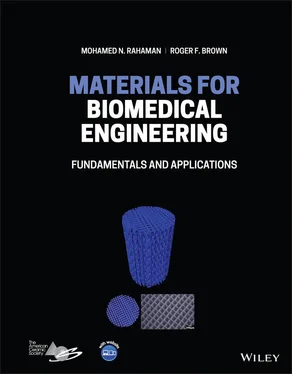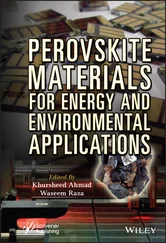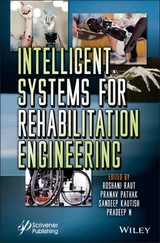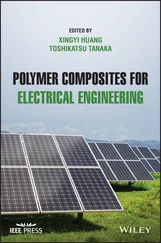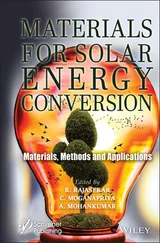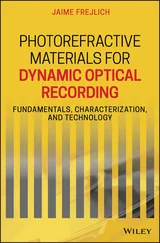Mohamed N. Rahaman - Materials for Biomedical Engineering
Здесь есть возможность читать онлайн «Mohamed N. Rahaman - Materials for Biomedical Engineering» — ознакомительный отрывок электронной книги совершенно бесплатно, а после прочтения отрывка купить полную версию. В некоторых случаях можно слушать аудио, скачать через торрент в формате fb2 и присутствует краткое содержание. Жанр: unrecognised, на английском языке. Описание произведения, (предисловие) а так же отзывы посетителей доступны на портале библиотеки ЛибКат.
- Название:Materials for Biomedical Engineering
- Автор:
- Жанр:
- Год:неизвестен
- ISBN:нет данных
- Рейтинг книги:4 / 5. Голосов: 1
-
Избранное:Добавить в избранное
- Отзывы:
-
Ваша оценка:
- 80
- 1
- 2
- 3
- 4
- 5
Materials for Biomedical Engineering: краткое содержание, описание и аннотация
Предлагаем к чтению аннотацию, описание, краткое содержание или предисловие (зависит от того, что написал сам автор книги «Materials for Biomedical Engineering»). Если вы не нашли необходимую информацию о книге — напишите в комментариях, мы постараемся отыскать её.
A comprehensive yet accessible introductory textbook designed for one-semester courses in biomaterials Materials for Biomedical Engineering: Fundamentals and Applications
Materials for Biomedical Engineering: Fundamentals and Applications
Materials for Biomedical Engineering — читать онлайн ознакомительный отрывок
Ниже представлен текст книги, разбитый по страницам. Система сохранения места последней прочитанной страницы, позволяет с удобством читать онлайн бесплатно книгу «Materials for Biomedical Engineering», без необходимости каждый раз заново искать на чём Вы остановились. Поставьте закладку, и сможете в любой момент перейти на страницу, на которой закончили чтение.
Интервал:
Закладка:
Table of Contents
1 Cover
2 Title Page
3 Copyright Page
4 Preface
5 About the Companion Website
6 Part I: General Introduction 1 Biomaterials – An Introductory Overview1.1 Introduction 1.2 Definition and Meaning of Common Terms 1.3 Biomaterials Design and Selection 1.4 Properties of Materials 1.5 Case Study in Materials Design and Selection: The Hip Implant 1.6 Brief History of the Evolution of Biomaterials 1.7 Biomaterials – An Interdisciplinary Field 1.8 Concluding Remarks Problems References
7 Part II: Materials Science of Biomaterials 2 Atomic Structure and Bonding2.1 Introduction 2.2 Interatomic Forces and Bonding Energies 2.3 Types of Bonds between Atoms and Molecules 2.4 Primary Bonds 2.5 Secondary Bonds 2.6 Atomic Bonding and Structure in Proteins 2.7 Concluding Remarks Problems Reference Further Reading 3 Structure of Solids3.1 Introduction 3.2 Packing of Atoms in Crystals 3.3 Structure of Solids Used as Biomaterials 3.4 Defects in Crystalline Solids 3.5 Microstructure of Biomaterials 3.6 Special Topic: Lattice Planes and Directions 3.7 Concluding Remarks References Further Reading 4 Bulk Properties of Materials4.1 Introduction 4.2 Mechanical Properties of Materials 4.3 Effect of Microstructure on Mechanical Properties 4.4 Designing with Ductile and Brittle Materials 4.5 Electrical Properties 4.6 Magnetic Properties 4.7 Thermal Properties 4.8 Optical Properties 4.9 Concluding Remarks Problems References Further Reading 5 Surface Properties of Materials5.1 Introduction 5.2 Surface Energy 5.3 Surface Chemistry 5.4 Surface Charge 5.5 Surface Topography 5.6 Concluding Remarks Problems References Further Readings
8 Part III: Classes of Materials Used as Biomaterials 6 Metallic Biomaterials6.1 Introduction 6.2 Crystal Structure of Metals 6.3 Polymorphic Transformation 6.4 Alloys 6.5 Shape (Morphology) of Phases 6.6 Phase Diagrams 6.7 Production of Metals 6.8 Mechanisms for Strengthening Metals 6.9 Metals Used as Biomaterials 6.10 Degradable Metals 6.11 Concluding Remarks Problems References Further Reading 7 Ceramic Biomaterials7.1 Introduction 7.2 Design and Processing of Ceramics 7.3 Chemically Unreactive Ceramics 7.4 Calcium Phosphates 7.5 Calcium Phosphate Cement (CPC) 7.6 Calcium Sulfate 7.7 Glasses 7.8 Chemically Unreactive Glasses 7.9 Bioactive Glasses 7.10 Glass‐Ceramics 7.11 Concluding Remarks Problems References Further Reading 8 Synthetic Polymers I 8.1 Introduction 8.2 Polymer Science Fundamentals 8.3 Production of Polymers 8.4 Mechanical Properties of Polymers 8.5 Thermoplastic Polymers 8.6 Elastomeric Polymers 8.7 Special Topic: Polyurethanes 8.8 Water‐soluble Polymers 8.9 Concluding Remarks Problems References Further Reading 9 Synthetic Polymers II9.1 Introduction 9.2 Degradation of Polymers 9.3 Erosion of Degradable Polymers 9.4 Characterization of Degradation and Erosion 9.5 Factors Controlling Polymer Degradation 9.6 Factors Controlling Polymer Erosion 9.7 Design Criteria for Degradable Polymers 9.8 Types of Degradable Polymers Relevant to Biomaterials 9.9 Concluding Remarks Problems References Further Readings 10 Natural Polymers10.1 Introduction 10.2 General Properties and Characteristics of Natural Polymers 10.3 Protein‐Based Natural Polymers 10.4 Polysaccharide‐Based Polymers 10.5 Concluding Remarks Problems References Further Reading 11 Hydrogels11.1 Introduction 11.2 Characteristics of Hydrogels 11.3 Types of Hydrogels 11.4 Creation of Hydrogels 11.5 Characterization of Sol to Gel Transition 11.6 Swelling Behavior of Hydrogels 11.7 Mechanical Properties of Hydrogels 11.8 Transport Properties of Hydrogels 11.9 Surface Properties of Hydrogels 11.10 Environmentally Responsive Hydrogels 11.11 Synthetic Hydrogels 11.12 Natural Hydrogels 11.13 Applications of Hydrogels 11.14 Concluding Remarks Problems References Further Readings 12 Composite Biomaterials12.1 Introduction 12.2 Types of Composites 12.3 Mechanical Properties of Composites 12.4 Biomedical Applications of Composites 12.5 Concluding Remarks Problems References Further Readings 13 Surface Modification and Biological Functionalization of Biomaterials13.1 Introduction 13.2 Surface Modification 13.3 Surface Modification Methods 13.4 Plasma Processes 13.5 Chemical Vapor Deposition 13.6 Physical Techniques for Surface Modification 13.7 Parylene Coating 13.8 Radiation Grafting 13.9 Chemical Reactions 13.10 Solution Processing of Coatings 13.11 Biological Functionalization of Biomaterials 13.12 Concluding Remarks Problems References Further Reading
9 Part IV: Degradation of Biomaterials in the Physiological Environment 14 Degradation of Metallic and Ceramic Biomaterials 14.1 Introduction 14.2 Corrosion of Metals Problems References Further Readings 15 Degradation of Polymeric Biomaterials15.1 Introduction 15.2 Hydrolytic Degradation 15.3 Enzyme‐Catalyzed Hydrolysis 15.4 Oxidative Degradation 15.5 Other Types of Degradation 15.6 Concluding Remarks Problems References Further Readings
10 Part V: Biocompatibility Phenomena 16 Biocompatibility Fundamentals16.1 Introduction 16.2 Biocompatibility Phenomena with Implanted Devices 16.3 Protein and Cell Interactions with Biomaterial Surfaces 16.4 Cells and Organelles 16.5 Extracellular Matrix and Tissues 16.6 Plasma and Blood Cells 16.7 Platelet Adhesion to Biomaterial Surfaces 16.8 Platelets and the Coagulation Process 16.9 Cell Types and Their Roles in Biocompatibility Phenomena 16.10 Concluding Remarks Problems References Further Reading 17 Mechanical Factors in Biocompatibility Phenomena17.1 Introduction 17.2 Stages and Mechanisms of Mechanotransduction 17.3 Mechanical Stress‐Induced Biocompatibility Phenomena 17.4 Outcomes of Transduction of Extracellular Stresses and Responses 17.5 Concluding Remarks Problems References Further Reading 18 Inflammatory Reactions to Biomaterials18.1 Introduction 18.2 Implant Interaction with Plasma Proteins 18.3 Formation of Provisional Matrix 18.4 Acute Inflammation and Neutrophils 18.5 Chronic Inflammation and Macrophages 18.6 Granulation Tissue 18.7 Foreign Body Response 18.8 Fibrosis and Fibrous Encapsulation 18.9 Resolution of Inflammation 18.10 Inflammation and Biocompatibility 18.11 Concluding Remarks Problems References Further Reading 19 Immune Responses to Biomaterials19.1 Introduction 19.2 Adaptive Immune System 19.3 The Complement System 19.4 Adaptive Immune Responses to Biomaterials 19.5 Designing Biomaterials to Modulate Immune Responses 19.6 Concluding Remarks Problems References 20 Implant‐Associated Infections 20.1 Introduction 20.2 Bacteria Associated with Implant Infections 20.3 Biofilms and their Characteristics 20.4 Sequence of Biofilm Formation on Implant Surfaces 20.5 Effect of Biomaterial Characteristics on Bacterial Adhesion 20.6 Biofilm Shielding of Infection from Host Defenses and Antibiotics 20.7 Effects of Biofilm on Host Tissues and Biomaterial Interactions 20.8 Strategies for Controlling Implant Infections 20.9 Concluding Remarks Problems References Further Reading 21 Response to Surface Topography and Particulate Materials21.1 Introduction 21.2 of Biomaterial Surface Topography on Cell Response 21.3 Biomaterial Surface Topography for Antimicrobial Activity 21.4 Microparticle‐Induced Host Responses 21.5 Nanoparticle‐Induced Host Responses 21.6 Concluding Remarks Problems References Further Readings 22 Tests of Biocompatibility of Prospective Implant Materials22.1 Introduction 22.2 Biocompatibility Standards and Regulations 22.3 In vitro Biocompatibility Test Procedures 22.4 In vivo Biocompatibility Test Procedures 22.5 Clinical Trials of Biomaterials 22.6 FDA Review and Approval 22.7 Case Study: The Proplast Temporomandibular Joint 22.8 Concluding Remarks Problems References Further Reading
11 Part VI: Applications of Biomaterials 23 Biomaterials for Hard Tissue Repair23.1 Introduction 23.2 Healing of Bone Fracture 23.3 Healing of Bone Defects 23.
Читать дальшеИнтервал:
Закладка:
Похожие книги на «Materials for Biomedical Engineering»
Представляем Вашему вниманию похожие книги на «Materials for Biomedical Engineering» списком для выбора. Мы отобрали схожую по названию и смыслу литературу в надежде предоставить читателям больше вариантов отыскать новые, интересные, ещё непрочитанные произведения.
Обсуждение, отзывы о книге «Materials for Biomedical Engineering» и просто собственные мнения читателей. Оставьте ваши комментарии, напишите, что Вы думаете о произведении, его смысле или главных героях. Укажите что конкретно понравилось, а что нет, и почему Вы так считаете.
